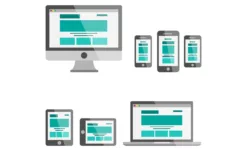One of the main goals of a website is to impress its audience visually. Well, inexperienced designers have a habit of interpreting this as cramming as many high-res images, videos and interactive elements as they possibly can into the layout of the page. The first thing this would do is significantly slow down your website, seeing how each of these elements requires an additional HTTP request. This, however, isn’t the worst part. By cramming too many information, you will distract your audience from what really matters and in this way lose them for good. In order to avoid this, here are few minimalist web design secrets you should keep your eye out for.
1. Whitespace as a pillar of minimalism
The first thing you need to keep in mind is the fact that the unused space on your website needs to act as an active element. You see, the lack of content in that particular area is meant to highlight what really matters on the page, like for example your CTA button, contact information or a particularly important piece of content. Furthermore, the abundance of whitespace is there to help mobile users, seeing how it will help separate two different clickable objects. In other words, it helps keep the website touch friendly. Finally, whitespace is not necessarily white, but it is usually advisable to keep it bright in order to stress out the font, which is best in black or a different color.
2. Playing with contrast
Another great idea you could try out is to play a bit with contrast in order to create an image that is pleasing to the eye of your visitors. Still, in a recent interview with a veteran freelance website developer, it came to our attention that this contrast doesn’t necessarily have to be in color. Another way to make a distinction between different elements is through contrast in size, where the larger piece of content represents something more relevant to the visitor. Additionally, you could also go with contrast through alignment. You see according to numerous research, the left side of the screen gets significantly more viewing time, so it might be worth your while to display any non-vital information you might have there.
3. Incredibly intuitive navigation
Next thing you need to pull off right is the navigation. You see, in order for it to be effective, it needs to be incredibly simplified, so that each of its visitors knows exactly where to click next from the second one. Sure, some people prefer going with hamburger menus, but recent surveys have shown that they do not seem particularly intuitive to audiences older than 44. Of course, they may not make up a significant portion of your demographic, but keep in mind that the simpler you go the more user-friendly you become. Additionally, improving the navigation throughout your page will get you indexed sooner, seeing how crawlers will have much easier time browsing through your content, as well.
4. Aim for harmony
Web design is art and like in any other art, what you are aiming for is the impression your piece makes on its audience. This is also why your entire website needs to become a single homogenous unit in the eyes of anyone who stumbles upon it. The easiest way to achieve this harmony is to try and make your website symmetric. You can go with horizontal, radial or even approximate symmetry (leaning a bit more towards the left as we discussed in some previous sections). On the other hand, you can sometimes achieve this effect by doing the opposite and making its layout deliberately asymmetric. Still, asymmetric and messy are not the same thing, which is something you need to pay close attention to.
In conclusion
As you can see, there are so many ways to get it all wrong, that it isn’t any wonder why web design laymen often fail in their efforts. If you are still determined to make your web design into a DIY project, you should at least be ready to devote a fair amount of your time to the research of the topic. It might even be worth your while to contact a professional designer and ask for few tips and pointers. Still, if you want our advice, your website’s design definitely isn’t a place where you should start practicing austerity.








